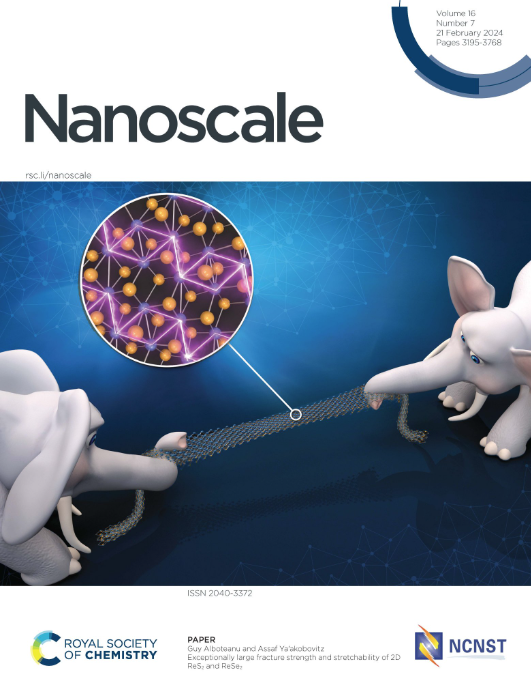图案化铁钯薄膜中的相变和磁性
IF 5.8
3区 材料科学
Q1 CHEMISTRY, MULTIDISCIPLINARY
引用次数: 0
摘要
局部表面曲率和与大表面体积比相关的效应在薄膜中是非常重要的,并且可以影响温度诱导相变的特性。特别是,这些效应对薄多层向纳米合金的转变有实质性的影响,其中模板辅助图案化的引入可以改变转变温度,诱导晶体织构并改变相组成。在本研究中,我们研究了图案化Fe/Pd多层膜中导致FePd合金形成的相变。我们采用纳米球光刻和阳极氧化两种不同的模板辅助图像化方法,研究了薄膜形貌和局部曲率对所得合金的转变过程、结构和磁性的影响。我们结合Mössbauer光谱,x射线衍射,扫描电镜成像和磁强计来跟踪这些变化在短期和长期尺度。结果表明,薄膜形貌是决定热处理后合金物理性能的重要因素之一。它允许图案控制固态脱湿和原子重排,从而控制相变以及结构和磁性能。我们确定了两个反有效的过程负责FePd L10相的形成,图案诱导的原子间扩散和图案限制的扩散半径的影响。本文章由计算机程序翻译,如有差异,请以英文原文为准。

Phase transformations and magnetism in patterned FePd thin films
Local surface curvature and effects associated with a large surface-to-volume ratio are of great importance in thin films and can influence the character of temperature-induced phase transitions. In particular, these effects have a substantial influence on the transformation of thin multilayers into nano-alloys where the introduction of template-assisted patterning can shift the transformation temperature, induce a crystallographic texture, and change the phase composition. In this work, we study the phase transformations in patterned Fe/Pd multilayers leading to the formation of FePd alloys. We used two different template-assisted patterning methods, nanosphere lithography and anodization process, to study the influence of film morphology along with local curvature on the transformation process, structure, and magnetism of the resulting alloy. We combined Mössbauer spectroscopy, X-ray diffraction, SEM imaging, and magnetometry to track these changes at short- and long-range scales. We show that film morphology is one of the most important factors determining the physical properties of the alloy formed after thermal treatment. It allows for patterning-controlled solid-state dewetting and rearrangement of atoms that in turn governs the phase transformation as well as structural and magnetic properties. We identified two counter-effective processes responsible for FePd L10 phase formation, the effect of patterning-induced interatomic diffusion and the patterning-limited diffusion radius.
求助全文
通过发布文献求助,成功后即可免费获取论文全文。
去求助
来源期刊

Nanoscale
CHEMISTRY, MULTIDISCIPLINARY-NANOSCIENCE & NANOTECHNOLOGY
CiteScore
12.10
自引率
3.00%
发文量
1628
审稿时长
1.6 months
期刊介绍:
Nanoscale is a high-impact international journal, publishing high-quality research across nanoscience and nanotechnology. Nanoscale publishes a full mix of research articles on experimental and theoretical work, including reviews, communications, and full papers.Highly interdisciplinary, this journal appeals to scientists, researchers and professionals interested in nanoscience and nanotechnology, quantum materials and quantum technology, including the areas of physics, chemistry, biology, medicine, materials, energy/environment, information technology, detection science, healthcare and drug discovery, and electronics.
 求助内容:
求助内容: 应助结果提醒方式:
应助结果提醒方式:


